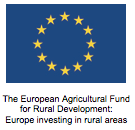- You are here
- Willow Growing
Willow Growing
Willows belong to the genus Salix, and species of willow have been found amongst the earliest recorded flowering plants and grow in many countries of the world. There are about 300 species of willow worldwide. 19 species of which are regarded as native to Britain.
Willow sets or cuttings about 6 inches in length are planted out in the spring, traditionally by hand, but machines are now used. The land has to be prepared as with any growing crop, by ploughing and producing a seedbed. Throughout the year the willow bed is weeded and carefully tended to in order to get a good quality crop of willow at the end of the year.
The willow is harvested from the second year onwards, then annually for the next 30 to 60 years. The stems of willow wands are cut after the leaf has fallen in November through to March. Until quite recently all willows were cut using sharp hooks, now most willows are cut with machines. Harvesting is still very labour intensive as manual labour is required to gather them up after cutting and loading them onto trailers.
The cut willows are then taken back to the farm for sorting. Some willow is kept for immediate sale for living willow constructions and river bank protection (“spiling”), this willow is known as “green” willow. Some is kept alive by standing in “pits” of water until April or May to keep it alive until the sap rises, leaves sprout, and then the bark can be peeled off to reveal the white inner wood. This produces what is known in the trade as “white” willow.



